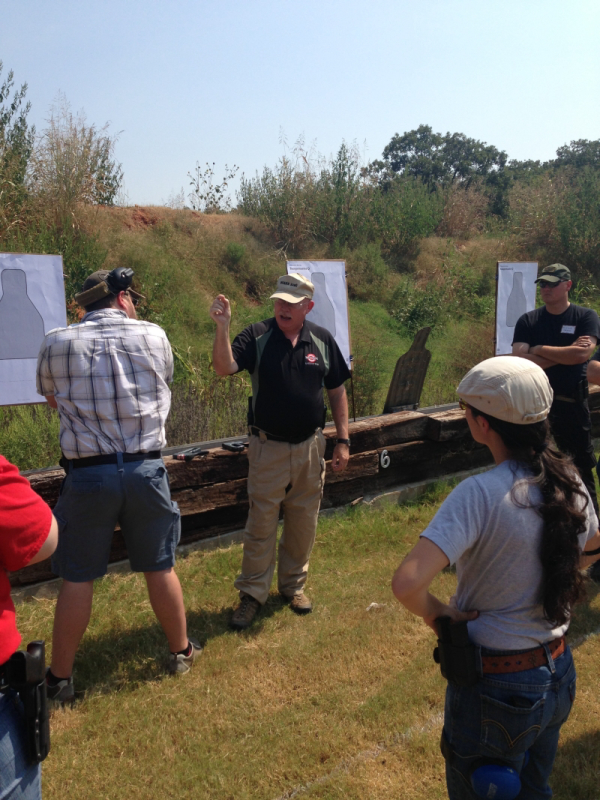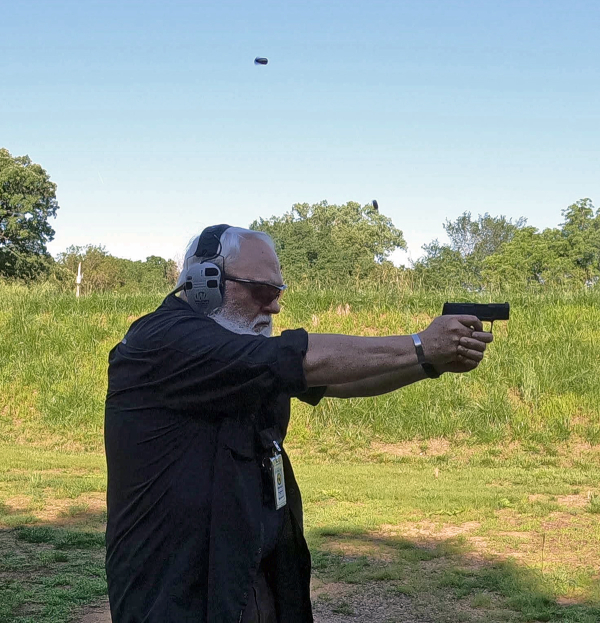Today’s feature is from correspondent Dave Spaulding.
“What and how should I practice?” It is the number one question I hear these days. This has always been the case, but it has taken on an even more meaning due to lack of training ammunition. Sorry folks, but this problem is going to get even worse in 2022 as raw materials become harder to get. My son-in-law works in the plumbing supply industry and he told me they are also expecting a raw material shortage. Think of the materials ammo and plumbing share, things like brass, copper, lead, etc. There are lots of folks vying for these materials…get ready!

Back to practice. What are you practicing for? While many want competition and combat to be the same, they are not. While I have competed in most all of the disciplines, they are not my interest, so let’s address combat. I have been studying this all of my adult life. I have personally interviewed hundreds of people who have been involved in armed conflict…world war veterans, Vietnam veterans, cops, armed citizens and yes, felons. They all have their thoughts on the subject.
Since my main focus was law enforcement for 35 years, many of the people I interviewed were cops and they have a different confrontation dynamic than do armed citizens. Since they take people into custody, many of their confrontations are of a close contact nature, this is not so for the armed citizen. My friend Tom Givens has been charting the performance of his student base for many years and has come up with some interesting thoughts on what to practice. While my armed citizen database is not as deep as his, what I have been told jives perfectly with what Tom reports. Below is from an article he wrote on the subject:

“At the time I write this, I’ve had 64 students involved in defensive gunplay.
“The majority of these incidents involved an armed robbery, which I believe is probably the most likely scenario for armed self-defense by a private citizen. We’re talking about business stickups, parking lot robberies at gunpoint, carjackings and home invasions — all crimes likely to get you killed. The reason the bad guy uses a weapon is to create standoff and to terrorize the victim into compliance, before closing in to take the wallet, purse, car keys, etc.
“The thug will, however, need to be close enough to his victim to communicate his desires and to easily close the distance and take the goods when the time comes. Thus, the typical armed robbery occurs at anywhere from two or three steps, to roughly the length of a car — between the robber and his victim. That is, then, about three to seven yards typically, or say nine to 21′ or so. This is the distance at which most of my students have had to use their guns.
“Only two of my students’ shootings occurred at contact distance. In one of those cases the physical contact was purely accidental. In the other case physical contact was intentional, but the victim missed a large number of cues before he was struck with a club.
“At the other end of the spectrum, we have had three students who have had to engage at 15, 17 and 22 yards. The other 92 percent of our student-involved incidents took place at a distance of 3 to 7 yards, with the majority occurring between 3 and 5 yards. The rule of thumb then is most civilian shootings occur within the length of a car.”
I think the message is clear, if you only have 50 or 100 rounds to practice with, they should be spent relatively close. With the growing popularity of the MRDS system, there is a strong desire to shoot handguns at distance, using active shooter situations as the justification for this. DON’T DO IT! I’m not saying don’t shoot at distance, but don’t spend a sizable amount of your limited training ammo doing so. Look, red dots are easy to use at distance…more difficult quick and up close which is MORE reason to practice with them at 5 yards versus 25. Let’s be honest, finding that dot in that small window is the number one problem. If you are going to use one then practice with it realistically, not just what makes you look and feel good…

At this moment in time, I would suggest you DO NOT spend valuable ammo practicing the essentials like drawing, reloading, clearing stoppages, rapid movement and the like. This can be done dry fire. During your live fire practice sessions, break out your timer and see where you stand on these essential skills, but don’t use up ammo trying to get to the time you want. Accept what the timer says and work on these skills in your dry fire routine. If you do, you will get the time you want.
I would use live ammo to practice “The Package” of solid grip, controlled index finger and recoil control as these cannot be mastered dry. Regarding grip, focus on not “pulsating” the lower fingers…you know, the flexing of the lower fingers that moves the muzzle. Considering the four fingers will try to work as a team, this is easier said than done. While grip strength is important, what is even more so is CONSISTENT GRIP PRESSURE which cannot not change if you wish to shoot accurately.
Work on minimum index finger movement while working the trigger. If you can focus on this, you will likely find you apply far more pressure than you really need. The more the index finger moves, the more the rest will want to “help out”. Work on resetting the trigger while recovering from recoil, not once you settle on target. I call it “reset on recovery”. Not only will it help you be better prepared to shoot when facing a real threat, it will help you minimize your index finger motion.
Ammo is not going to get easier to acquire and I doubt it will ever return to the prices we all remember and want. Practice wisely as practice is preparation for the most dangerous few moments of what I hope is the rest of your life!
Dave Spaulding is a professional firearms instructor with 36 years' experience in Law Enforcement and Federal Security. The recipient of the 2010 Law Enforcement Trainer of the Year Award from the International Law Enforcement Training and Educators Association (ILEETA), Dave has worked in all facets of law enforcement including communications, corrections, court security, patrol, evidence collection, training and investigations. He was a founding member of his agency’s SWAT Team and acted as its training officer for 8 years. He spent a year in an undercover capacity and was the commander of a multi-jurisdictional narcotics task force, has been an adjunct instructor at the former Heckler & Koch International Training Division and the Tactical Defense Institute. In addition to his many published articles (over 1,400), Dave is the author of two acclaimed books, Defensive Living and Handgun Combatives. He operated his own training company with focus on “the combative application of the handgun” www.handguncombatives.com .